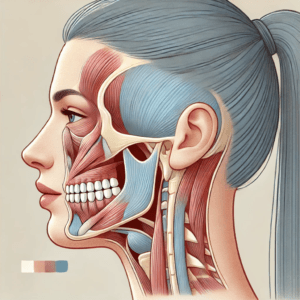What is Psoriatic Arthritis? Understanding the Joint-Skin Connection
Table of Contents

What is Psoriatic Arthritis? Understanding the Joint-Skin Connection
What is psoriatic arthritis? If you’ve been asking yourself this question, you’re not alone. This condition can be a real head-scratcher, affecting both your joints and skin in ways that might leave you feeling confused and frustrated. Let’s break it down and get to the bottom of what psoriatic arthritis really is.
The Basics: Psoriatic Arthritis 101
Psoriatic arthritis (PsA) is like having two unwelcome guests at once – arthritis and psoriasis. It’s an autoimmune condition where your body gets a bit confused and starts attacking itself, causing inflammation in your joints and skin.
The Joint-Skin Tag Team
Imagine your immune system as an overzealous bouncer at a club. In PsA, this bouncer starts kicking out perfectly good cells, causing trouble in your joints and on your skin.
Symptoms: The Tell-Tale Signs
PsA can show up in various ways, but here are some common red flags:
- Joint pain and stiffness
- Swollen fingers and toes (aka “sausage digits”)
- Nail changes (pitting, separation)
- Skin patches (red, scaly areas)
- Fatigue that just won’t quit
The PsA-Psoriasis Connection
Most people with PsA also have psoriasis, but not everyone with psoriasis develops PsA. It’s like a package deal that not everyone gets to “enjoy.”
Psoriasis: The Skin Side of the Story
Psoriasis causes those red, scaly patches on your skin. Think of it as your skin cells throwing a wild party, multiplying way faster than they should.
Types of Psoriatic Arthritis: The Many Faces of PsA
PsA isn’t a one-size-fits-all condition. It comes in different flavors:
- Symmetric PsA: Affects the same joints on both sides
- Asymmetric PsA: Affects joints randomly
- Distal PsA: Targets the ends of fingers and toes
- Spondylitis: Affects the spine
- Arthritis mutilans: The most severe form
Causes: The Mystery Behind PsA
We don’t know exactly what causes PsA, but it’s likely a mix of:
- Genetics (thanks, Mom and Dad!)
- Environmental triggers
- Immune system mishaps
Diagnosis: Cracking the PsA Code
Diagnosing PsA can be tricky. Doctors usually look at:
- Your medical history
- Physical exams
- Blood tests
- Imaging tests (X-rays, MRIs)
Treatment: Taming the PsA Beast
While there’s no cure for PsA, there are ways to manage it:
Medications: The Chemical Cavalry
- NSAIDs for pain relief
- DMARDs to slow joint damage
- Biologics for severe cases
Lifestyle Changes: The DIY Approach
- Exercise (gentle on the joints)
- Healthy diet
- Stress management
- Quitting smoking
Living with PsA: It’s a Journey, Not a Destination
PsA can be a rollercoaster, with good days and bad. The key is to:
- Stay positive
- Work closely with your healthcare team
- Connect with others who get it
The Impact of PsA: More Than Skin Deep
PsA doesn’t just affect your body. It can impact:
- Your mood (hello, frustration!)
- Your social life
- Your work
When to See a Doctor: Don’t Wait It Out
If you notice joint pain, especially with skin changes, it’s time to see a doc. Early treatment can make a big difference.
The Future of PsA Treatment: Hope on the Horizon
Research is ongoing, with new treatments always in development. The future looks brighter for PsA patients.
Conclusion
So, what is psoriatic arthritis? It’s a complex condition that affects both joints and skin, caused by an overactive immune system. While it can be challenging to live with, understanding PsA is the first step in managing it effectively. With the right treatment and support, many people with PsA lead full, active lives. Remember, you’re not alone in this journey – reach out to healthcare providers and support groups to help you navigate the ups and downs of living with psoriatic arthritis.
FAQs
- Can psoriatic arthritis go away on its own?
Unfortunately, PsA is a chronic condition that doesn’t go away on its own. However, with proper treatment, many people achieve remission where symptoms are minimal or absent. - Is psoriatic arthritis contagious?
No, PsA is not contagious. You can’t catch it from or give it to someone else. - Can children get psoriatic arthritis?
Yes, although it’s less common, children can develop PsA. It’s often called juvenile psoriatic arthritis when it occurs in kids. - Does everyone with psoriasis develop psoriatic arthritis?
No, only about 30% of people with psoriasis develop PsA. - Can diet affect psoriatic arthritis symptoms?
While there’s no specific “PsA diet,” some people find that certain foods trigger flares. An anti-inflammatory diet may help manage symptoms for some individuals.
Citations:
[1] https://www.webmd.com/arthritis/psoriatic-arthritis/psoriatic-arthritis-the-basics
[2] https://www.webmd.com/arthritis/psoriatic-arthritis/psoriatic-arthritis-symptoms
[3] https://www.mayoclinic.org/diseases-conditions/psoriatic-arthritis/symptoms-causes/syc-20354076
[4] https://www.niams.nih.gov/health-topics/psoriatic-arthritis
[5] https://www.nhs.uk/conditions/psoriatic-arthritis/
[6] https://my.clevelandclinic.org/health/diseases/13286-psoriatic-arthritis
[7] https://www.hopkinsmedicine.org/health/conditions-and-diseases/arthritis/psoriatic-arthritis
[8] https://www.arthritis.org/diseases/psoriatic-arthritis













Post Comment